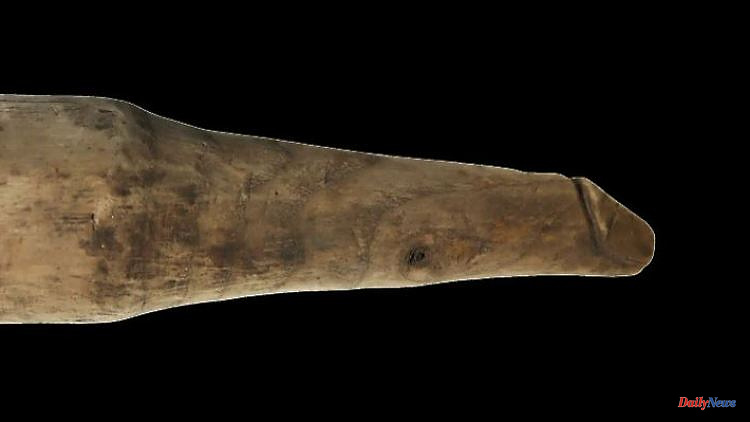During their excavations, archaeological teams often come across objects whose form and use are not self-explanatory. But sometimes an object is exactly what one might expect. Such is the case with a wooden penis unearthed at a Roman site.
In 1992, a wooden object was found during excavations at the Roman fort of Vindolanda in the British region of Northumberland. In the documents of the excavations near Hadrian's Wall, the approximately 2000-year-old object was classified as a tamping tool.
Archaeologists correct this assessment 30 years later. Rob Collins, a lecturer in archeology at Newcastle University, told the British "Guardian" that he thought it was perfectly clear that the find was a penis. He does not know who entered the other description in the catalogue. "Maybe someone was uncomfortable or didn't think the Romans would do such stupid things," says Collins. Together with his colleague Robert Sands from University College Dublin, he took a close look at the find.
The Vindolanda phallus was found along with shoes, clothing accessories, and artisanal waste products such as leather scraps and worked antlers. Therefore, it was probably assumed that it was a stuffing tool used in textile production. It is 16 centimeters long, carved from young ash, and has a broad, cylindrical base ending in a narrower shaft. The end is shaped like the glans of a penis. The research team from Newcastle University and University College Dublin believe it was larger when it was made because old wooden objects tend to shrink or warp.
The team came up with three possible theories, which were published in a lengthy discussion paper in Antiquity magazine. One theory is that it was used for sexual purposes. That could mean it was a sex toy. However, a degree of caution is required, says Collins. "Sometimes they [dildos] weren't just used for pleasure...they can also be tools of torture, so I'm very careful when I use the term sex toy. Hopefully that's what it was used for. It's the most exciting and intriguing possibility."
According to the scientist, if this were true, it would be the first Roman dildo found in archaeology. But we know from Greek and Roman poetry and art that dildos were used back then. "But we haven't found any archaeological examples yet, which in itself is fascinating," says Collins. It was particularly surprising that a wooden object was found in good condition after such a long time. Vindolanda is already famous for hundreds of wooden finds.
Theory two states that the object was used as a pestle, either for culinary purposes or for grinding cosmetic or medicinal ingredients. Its size would have made it easy to use and its shape would have given food or ingredients supposedly magical properties.
The third possibility is that the phallus was intended to be placed in a statue that passers-by would touch. This should bring good luck or avert bad luck. This custom was common throughout the Roman Empire. In this case, the statue would probably have been near the entrance to an important building. But the evidence suggests that the phallus was either indoors or at least not in an exposed outdoor position for any length of time.
According to the scientists, two- and three-dimensional representations of phalli were ubiquitous in the Roman world. They can be seen in mosaics, frescoes or decorations on vessels, among other things. Corresponding pendants were also found. Ancient phallic objects were often used to ward off evil. Analysis revealed that the Vindolanda phallus had significantly smoother ends, suggesting it was in use over a longer period of time.












